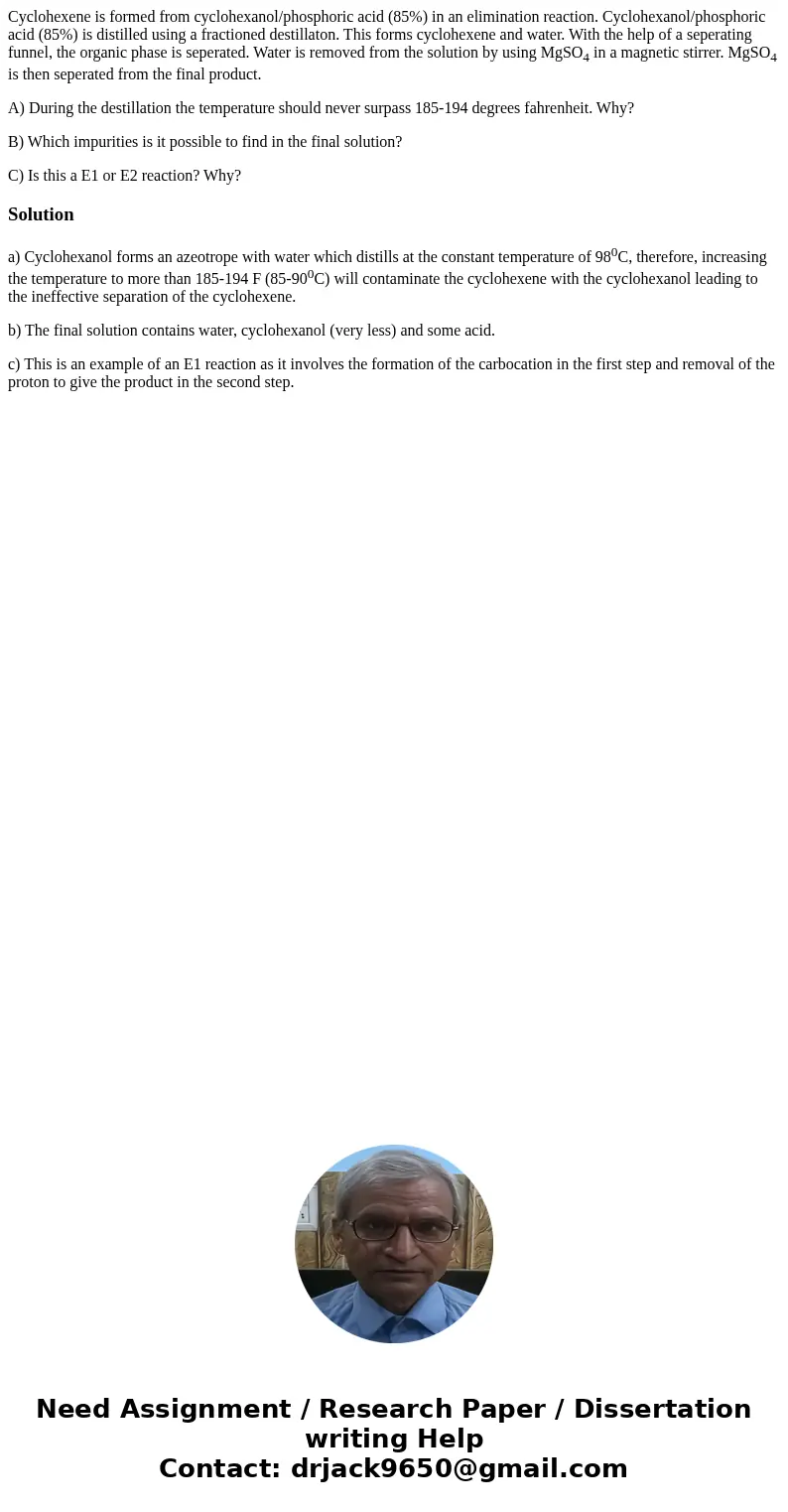Cyclohexene is formed from cyclohexanolphosphoric acid 85 in
Cyclohexene is formed from cyclohexanol/phosphoric acid (85%) in an elimination reaction. Cyclohexanol/phosphoric acid (85%) is distilled using a fractioned destillaton. This forms cyclohexene and water. With the help of a seperating funnel, the organic phase is seperated. Water is removed from the solution by using MgSO4 in a magnetic stirrer. MgSO4 is then seperated from the final product.
A) During the destillation the temperature should never surpass 185-194 degrees fahrenheit. Why?
B) Which impurities is it possible to find in the final solution?
C) Is this a E1 or E2 reaction? Why?
Solution
a) Cyclohexanol forms an azeotrope with water which distills at the constant temperature of 980C, therefore, increasing the temperature to more than 185-194 F (85-900C) will contaminate the cyclohexene with the cyclohexanol leading to the ineffective separation of the cyclohexene.
b) The final solution contains water, cyclohexanol (very less) and some acid.
c) This is an example of an E1 reaction as it involves the formation of the carbocation in the first step and removal of the proton to give the product in the second step.

 Homework Sourse
Homework Sourse